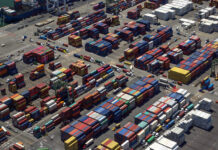
Pierre Poitras, a technical consultant at Conidia Bioscience, looks at how the increased percentage of biofuels can raise the cost of fuel as well as leave it susceptible to microbes.
To help meet environmental regulations and reduce the environmental impact of the shipping sector, increasing percentages of bio-components are being added to marine fuels. But what difference does this make to fuel husbandry and are there any risks to the marine operators? There are certainly some areas for concern and fuel management procedures may need to be adapted to avoid unnecessary maintenance costs or damage to engine systems.
To help meet environmental regulations and reduce the environmental impact of the shipping sector, increasing percentages of bio-components are being added to marine fuels. In 2017, ISO 8217 6th edition allowed additional Distillate FAME (DF) grades: DFA, DFZ and DFB with a maximum Fatty Acid Methyl Esters (FAME) content of 7.0 v/v %, another potential facilitator of increased water content and microbial contamination. These are complemented with new biofuels, which are created using innovative refining processes, such as Hydro processing of Vegetable Oils (HVO) and the co-processing of waste product (oils, plastics) and other raw material to substitute conventional crude oil, which may have different trace contaminants. While these reduce greenhouse gas (GHG) emissions, their different chemistry can potentially pose additional risks to marine assets.
The increased threat comes in the form of an increased potential for microbial contamination. Dormant spores of microbes, including yeast, filamentous fungi and bacteria, are present in fuel and, when water and air are in the system, create an ideal breeding ground for them to multiply and grow. The bio-component (biodiesel) within marine fuels, generically referred to as Fatty Acid Methyl Ester (FAME), gives these fuels a greater affinity to retain water, exacerbating the risks of microbial contamination. Water will typically separate from fuel but the introduction of FAME into its chemical composition means it will retain water at greater concentrations. At the refinery, fuel contains <200 ppm water content but, once exposed to the elements, DF grades can contain over 500 ppm water. Typically, the greater the FAME content, the greater the potential for an increased amount of emulsified water, which can reach up to 1500 ppm.
Indeed, 100% biodiesel can hold 15 to 25 times more water compared with 100% diesel fuel1. Water can find its way into fuel throughout the fuel supply chain. Anywhere where air is present, there is potential for moisture to condense – and there is plenty of opportunity in a marine environment! Water can be present in the fuel as free droplets, entrained water, or a separated layer of free water beneath the fuel. Combined with the increased organic content of biofuels for the microbes to feed on, the risk of contamination has increased significantly. Even if general maintenance procedures have prevented or controlled contamination in the past, ship owners and operators should consider taking additional steps to minimize the threat and protect their vessels.
Why is microbial contamination an issue?
Microbial contamination covers multiple types of organisms, the presence of which will vary according to individual site conditions, based on factors such as temperature and humidity. The microbes work together in communities to degrade fuel and affect fuelling equipment. They form biofilms, which are complex structures of sticky, slimy polymeric substances that provide a protective habitat for microbes growing within them. These biofilms can clump with any other floating cellular material to form microbial biomass clusters that can plug filters, screens or other small orifices within the fuel system. Furthermore, these biomass layers generate organic acids that corrode metal surfaces, causing damage to fuel tanks and other ancillary equipment. If left untreated, vessels are at risk of costly damage to systems, breakdowns while at sea, and being out of service for several days.
Protecting assets
As we look to further increase the percentage of FAME to reduce the environmental impact of marine fuels, the risk of microbial contamination also increases. On top of this threat, advances in technology to produce more efficient combustion engines increase the engines’ susceptibility to the risks of microbial contamination. Recent engine advancement has introduced precise, higher internal pressure fuel nozzles, whose smaller orifices have a lower tolerance to sediments and particulate matter that might be generated by off-spec fuel. This ‘perfect storm’ in the advances to control GHG emissions requires better fuel management steps to ensure valuable equipment is not damaged and huge costs incurred.
It is good practice to remove as much water as possible from fuel supplies, but a sound testing regime will also help ensure contamination does not lead to corrosion or damage of systems. Understanding levels of contamination means maintenance actions, such as tank cleaning and adding biocide, can be tailored and optimized to avoid unnecessary costs.
Sampling to identify microbial contamination is either carried out in a laboratory or on site on board. The frequency of testing can be honed according to microbial test results, observed trends, and operational experience. The issues with sending samples to shore-based laboratories for testing derive from the fact that the microbes are living, dynamic organisms. This means that the microbial population can change while the sample is in transit and during time delays, and results may not be representative of the tank environment. Samples, therefore, need to be stored and transported under environmentally controlled conditions, which presents logistical issues and the time taken to get results may mean the ship has visited the port and returned to sea before realizing there is a problem.
Rather than sending fuel samples to a laboratory, testing the fuel in situ, whether in port or at sea, provides a quick, easy and cost-effective alternative. Test kits based on antibodies, such as the FUELSTAT® test kit from Conidia Bioscience, are a proven method for identifying microbes with the ability to degrade fuel, and provide an accurate indication of contamination levels. These low-cost, single use test kits are simple to use, require minimal training, need no special handling, and can be readily integrated into day-to-day operations. They provide a result in a matter of minutes, which can be scanned into a mobile app for the purposes of logging and sharing results immediately from ship to shore. They offer an economical and quick way to determine levels of microbial contamination in fuel and enable fuel tank testing while at sea, and any required remediation work to be scheduled for when the ship returns to port.
Summary
We must reduce GHG emissions; increasing the percentage of FAME in marine fuels is a clear and easy ‘winner’ in the short term while we wait for the development of technology and infrastructure to support zero carbon alternatives. The chemical change in the composition of biofuels, however, means we need to recognize the increased risk of microbial contamination and adapt routine operations to ensure advanced corrosion and damage to system components does not threaten vessel availability and add significant costs to the bottom line.
Although ship owners may have previously had minimal issues with microbial contamination, fuel management procedures should be updated to protect marine vessels. Contamination can occur throughout the fuel supply chain and simple, onboard testing provides instant results, facilitates optimization of maintenance procedures, and may save thousands in repairs or lost operating time.
The above analysis is based on the White Paper Protecting equipment from microbial contamination when changing fuel chemistry.
Author of the article: Pierre Poitras, Technical Consultant at Conidia Bioscience Ltd
 Facilitated the implementation of recognised ASTM, CGSB, CSA, JIG, IATA, ISO and SAE standards along with the use of fuel quality control protocols and test methods. Specialised in the implementation and inspection of fuel facilities to recognised industry standards.
Facilitated the implementation of recognised ASTM, CGSB, CSA, JIG, IATA, ISO and SAE standards along with the use of fuel quality control protocols and test methods. Specialised in the implementation and inspection of fuel facilities to recognised industry standards.
Strong 35 years+ experience in fuel quality control, Pierre Poitras adapts and delivers training sessions on jet and diesel fuel quality. He provides in-depth training on FUELSTAT® test kits to assess the presence of microbiological growth that may affect fuelling equipment.








